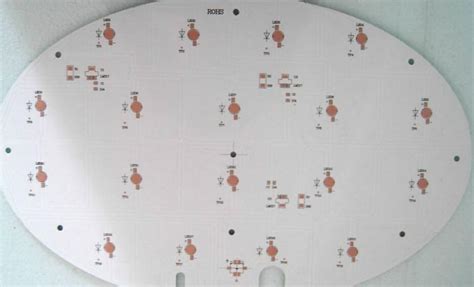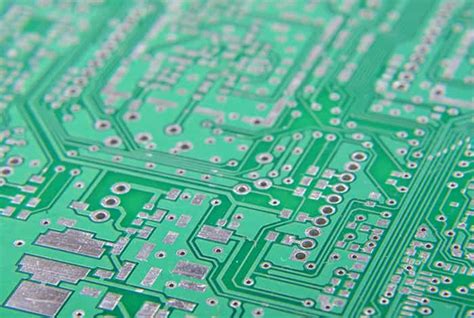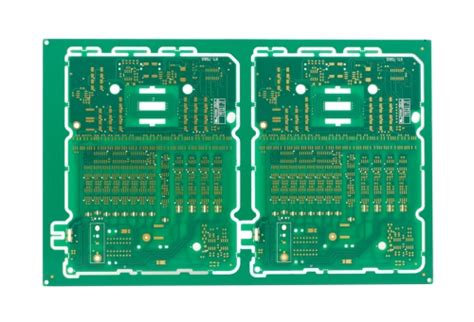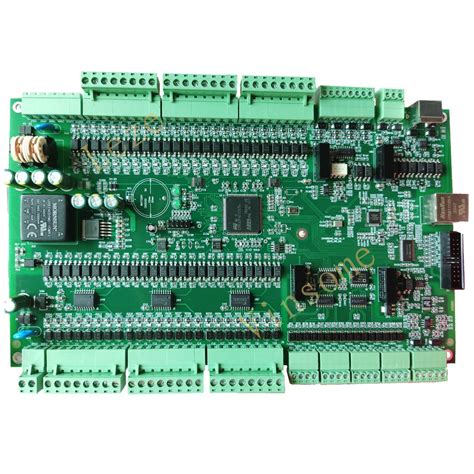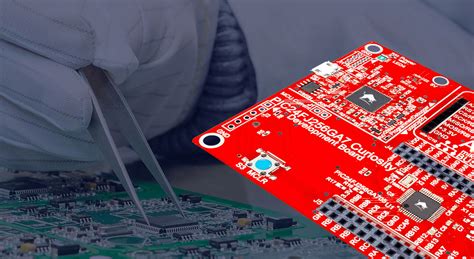Discover the Benefits of Aluminum PCB Prototyping Today!
Key Takeaways
When considering aluminum PCB prototyping, it’s essential to understand the distinct advantages that set it apart from conventional options. The most notable benefit is superior thermal management; aluminum PCBs dissipate heat more efficiently than their traditional counterparts, making them ideal for high-power applications. As you explore the world of pcb manufacturing, you will find that this enhanced thermal performance significantly improves the lifespan and reliability of electronic components. Additionally, lightweight durability is a crucial factor; aluminum provides a robust yet lightweight solution that contributes to more efficient product designs. This quality can be particularly beneficial in industries where weight reduction is vital, allowing for more versatile applications across various sectors.
When analyzing pcb manufacturing costs, you’ll discover that while initial expenses may vary, the long-term benefits often outweigh these investments. Aluminum PCBs tend to be more cost-effective in the grand scheme because of their durability and increased performance, thus reducing replacement and repair needs over time. As you delve into various pcb manufacturing companies, look for those leveraging the advantages of aluminum materials to enhance their product offerings. Ultimately, understanding these key takeaways will empower you to make informed decisions for your next pcb manufacturing business project.
Understanding Aluminum PCB Prototyping: A Comprehensive Overview
Aluminum PCB prototyping plays a crucial role in today’s electronics landscape, particularly due to its superior thermal management capabilities. The unique properties of aluminum PCBs allow them to efficiently dissipate heat, which is essential in high-performance applications where overheating can lead to device failure. This characteristic significantly enhances reliability, making it a favorable choice for PCB manufacturing.
When you consider the cost-effectiveness of aluminum PCBs, it becomes evident that you gain substantial value compared to traditional materials. The initial PCB manufacturing cost might be higher; however, the benefits of durability and longevity often justify the investment. This is particularly important for PCB manufacturing companies aiming to minimize long-term operational costs and improve their product offerings.
Moreover, the lightweight nature of aluminum ensures that designs remain compact without compromising performance. In industries such as automotive and telecommunications, where reducing weight can lead to better efficiency and performance, using aluminum in your prototype could be a game-changer.
“Investing in quality materials today leads to better performance and lasting durability tomorrow.”
For those involved in the PCB manufacturing business, understanding these advantages can help you make informed decisions regarding material selection. Leveraging aluminum can provide not only technical benefits but also align with market demands for sustainable and efficient solutions. Consider exploring more about this innovative approach through professional resources available online, such as those provided by Andwin PCB.
The Importance of Thermal Management in Aluminum PCBs
When considering aluminum PCB prototyping, one of the most crucial factors is thermal management. This is essential in ensuring that electronic components operate efficiently and have a prolonged lifespan. Aluminum PCBs excel in dissipating heat compared to traditional materials due to their outstanding thermal conductivity. In high-power applications, where heat generation is significant, effective thermal management prevents overheating and potential damage to sensitive components. When you work with PCB manufacturing companies, you’ll find that their ability to provide thermal management solutions through aluminum PCBs can greatly improve the reliability of your products.
This is particularly relevant for industries such as automotive, consumer electronics, and telecommunications, where performance is paramount. By utilizing aluminum PCB prototyping, you not only enhance the thermal performance of your designs but also experience a reduction in overall PCB manufacturing costs—a vital consideration for maintaining a profitable PCB manufacturing business. Implementing efficient thermal strategies means fewer failures and reworks, translating into savings on production downtime and enhanced product satisfaction from end-users. This investment in superior thermal management ultimately positions your projects for success across varied applications, establishing a robust foundation for future endeavors in the world of electronics.
Lightweight Durability: Why It Matters in PCB Applications
When considering PCB manufacturing, lightweight durability stands out as a critical factor in enhancing your design’s overall performance. Aluminum PCBs offer significant advantages in this area, thanks to their unique properties that make them both lightweight and robust. In environments where weight reduction is essential—such as in aerospace and automotive industries—the use of aluminum PCBs can result in substantial benefits. They not only help decrease the overall weight of your product but also maintain structural integrity, thus leading to increased reliability over time.
The durability of aluminum PCBs extends to their ability to withstand various environmental factors, including temperature fluctuations and moisture. This is particularly important when comparing them to traditional PCB materials, where excess weight often translates into compromised functionality under stress. By choosing aluminum, you’re opting for a material that excels in demanding conditions while minimizing PCB manufacturing costs due to its efficient thermal management capabilities.
For businesses involved in PCB manufacturing, understanding how lightweight durability impacts your materials can influence production choices and customer satisfaction. As you explore options among different pcb manufacturing companies, consider the implications not only on cost but also on the performance and longevity of the products you’re designing. Ultimately, lightweight durability is more than just a desirable trait; it’s a necessity that can drive advancements in your pcb manufacturing business and open doors to innovative applications across various industries. By harnessing these benefits, you enhance the value provided to customers while solidifying your competitive position in the market.
Cost-Effectiveness of Aluminum PCBs Compared to Traditional Options
When considering aluminum PCB prototyping, you may find that one of the most compelling advantages is its cost-effectiveness in the world of PCB manufacturing. Traditional materials often lead to higher PCB manufacturing costs, primarily due to inefficiencies in heat dissipation and material waste. However, aluminum PCBs provide a robust solution by offering superior thermal management that can significantly minimize operational impacts, ultimately reducing costs.
In an ever-competitive landscape, partnering with reputable PCB manufacturing companies can further streamline your processes and help you control expenditures. The initial investment might seem daunting, but the long-term advantages of durability and performance often outweigh these upfront costs. As you weigh your options in the PCB manufacturing business, remember that the right choice not only enhances product reliability but also contributes to efficiency across your manufacturing operations.
Here’s a comparative table illustrating key differences between aluminum PCBs and traditional options:
| Feature | Aluminum PCBs | Traditional PCBs |
|---|---|---|
| Thermal Management | Excellent | Moderate |
| Weight | Lightweight | Heavier |
| Durability | High | Variable |
| Production Cost | Competitive | Generally Higher |
By opting for aluminum PCB solutions, you position yourself for both immediate and future savings in terms of efficiency and product performance.
Applications of Aluminum PCB Prototyping Across Industries
Aluminum PCB prototyping has transformed various sectors due to its superior thermal management, lightweight durability, and cost-effectiveness. In the automotive industry, for instance, these PCBs are essential for advanced lighting systems and power distribution applications, where efficient heat dissipation can significantly enhance performance and reliability. Similarly, in the telecommunications sector, aluminum PCBs play a crucial role in wireless communication devices by ensuring optimal signal integrity and minimizing thermal buildup. Additionally, industries focused on LED technology benefit tremendously from aluminum PCB prototyping, as it allows for innovative designs that improve brightness and energy efficiency while reducing the overall product weight. When working with pcb manufacturing companies, understanding how aluminum options can affect your project’s output is vital. Not only can you tailor designs to your specifications, but you can also maintain lower pcb manufacturing costs compared to traditional materials. This flexibility makes aluminum PCBs an attractive choice for any pcb manufacturing business aiming to produce high-quality products while remaining cost-efficient. The versatility of aluminum PCBs ensures they continue to be a sought-after solution across multiple applications in an ever-evolving market landscape.
Best Practices for Successful Aluminum PCB Prototyping
When engaging in aluminum PCB prototyping, adhering to best practices can significantly enhance your project’s success. First, it’s essential to collaborate closely with pcb manufacturing companies to ensure that your design aligns with industry standards. This close partnership allows you to leverage their expertise in pcb manufacturing, helping you navigate any potential challenges before production begins. Additionally, understanding the pcb manufacturing cost is crucial; you’ll want to find a balance between high-quality materials and overall expenditures. Investing in excellent materials might come at a premium, but it also guarantees superior performance and durability, which could save you money in the long run.
You should familiarize yourself with the specific thermal management techniques that benefit aluminum PCBs. Effective heat dissipation is key to maintaining performance and longevity in various applications. Furthermore, ensure your design maximizes the benefits of lightweight durability, which is one of the standout features of aluminum PCBs compared to traditional options. To facilitate smoother pcb manufacturing, prioritize communication and feedback loops during the prototyping phase; this iterative process will help address any design issues early on. By following these best practices, you can set your project up for success and ensure that your aluminum PCB meets or exceeds its intended performance criteria, ultimately contributing positively to your pcb manufacturing business objectives.
Future Trends in Aluminum PCB Technology and Design
As the demand for advanced electronic applications continues to grow, aluminum PCB prototyping is evolving to meet various challenges. Emerging trends in this field focus on enhanced thermal management solutions that not only improve the durability of PCBs but also significantly lower pcb manufacturing costs. With the integration of new materials and innovative designs, pcb manufacturing companies are now able to produce lightweight, high-performance boards that cater to specific industry needs. For instance, the rise of smart devices and IoT applications has triggered a shift towards designs that allow for greater heat dissipation, ensuring reliability and efficiency.
Furthermore, advancements in fabrication techniques are leading to faster prototyping times, which benefits those running a pcb manufacturing business by allowing quicker turnarounds while reducing costs. As you explore these innovative avenues in aluminum PCB technology, consider how these improvements can enhance performance across various sectors. Staying informed on these trends will not only keep you competitive but also empower you to leverage advancements that could set your products apart in an increasingly crowded marketplace. By embracing this dynamic landscape, you can optimize product design while capitalizing on the numerous advantages that aluminum PCBs now offer.
Conclusion
In summary, exploring aluminum PCB prototyping offers numerous advantages that significantly enhance the performance of your projects. Notably, the superior thermal management provided by aluminum base materials ensures that your electronics operate efficiently and with less risk of overheating. This feature is particularly essential for high-performance applications where heat dissipation is critical. Additionally, aluminum PCBs are known for their lightweight durability, making them suitable for a range of products from consumer electronics to industrial machinery.
When considering the cost-effectiveness of aluminum PCBs, it’s important to compare them with traditional options offered by many PCB manufacturing companies. You may find that investing in aluminum technology can reduce overall PCB manufacturing costs, particularly when factoring in the long-term benefits of improved performance and reliability. For anyone operating a PCB manufacturing business, transitioning to aluminum could be a strategic move to meet growing market demands while also staying competitive.
In various industries, leveraging these advantages ensures optimal results while reducing waste and enhancing product lifespans. As you think about your next project, consider how these benefits can shape your approach to PCB manufacturing and elevate your designs to new heights.
FAQs
What is aluminum PCB prototyping?
Aluminum PCB prototyping refers to the process of creating printed circuit boards (PCBs) made from aluminum substrates. This approach provides enhanced thermal management, making your designs more efficient and reliable.
Why is thermal management important in PCBs?
Thermal management is crucial in PCB manufacturing because excessive heat can lead to component failure. Aluminum PCBs dissipate heat effectively, ensuring that your electronic devices operate smoothly.
How does aluminum compare to traditional PCB materials?
Aluminum PCBs offer superior lightweight durability compared to traditional FR4 materials. This advantage makes them particularly appealing for applications where weight reduction is essential, such as in aerospace and automotive sectors.
What are the cost implications of aluminum PCB prototyping?
While PCB manufacturing cost can be higher for aluminum options initially, the long-term benefits often outweigh the initial investment. The improved thermal performance and longevity can lead to reduced maintenance and replacement costs over time.
Can I use aluminum PCBs for different applications?
Absolutely! Aluminum PCB prototyping can be utilized across various industries including lighting, telecommunications, and automotive. Their versatility ensures they meet the demands of multiple pcb manufacturing companies.

